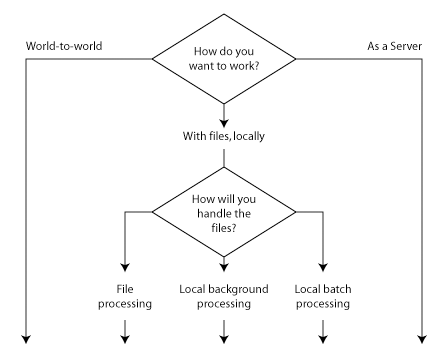Ways To Process Audio

CEDAR Cambridge provides many of the functions of an audio workstation, allowing you to access existing audio and video files held on the system or elsewhere on a local area network. You may process these in many ways:
Local processing
You can process local files in the foreground using CEDAR's streaming processes. These can run in real-time or can be rendered, which will usually take less time than the duration of the audio. There is also a suite of off-line spot processes and track-based processes available in this mode.
Background processing (requires the Server Pack)
If your workload is heavy and your audio is suited to this, you can move jobs that use the streaming processes into the background for background processing. This allows you to start recording or working on other files concurrently with the task already underway.
Batch processing (requires the Server Pack)
If you have many files that require identical processing (such as removing a consistent hum, or cleaning up recordings with similar click characteristics) you can use batch processing. These allow you to invoke the streaming and track-based processes to clean unlimited numbers of files without user intervention.
Operating a restoration server
Uses for the batch processor are not confined to the processing of files held locally on CEDAR Cambridge's hard drive, nor to the user sitting at the keyboard of the CEDAR system. When set up appropriately, CEDAR Cambridge offers multiple batch processing paths that provide restoration capabilities across a network, with dedicated input and output folders for each audio requirement. The restoration server may be used by anybody who can see its input and output folders.
To make it compatible with media asset management (MAM) and similar systems, the optional XML Extension allows the remote system to determine the processing undertaken by the restoration server.
World-to-world and world-to-disk processing
Although now largely obsolete, real-time world-to-world processing is still supported, and this allows audio to be played from an input device, passed through CEDAR Cambridge as if it were an outboard processor, and then recorded onto a third device. You may also process audio while recording to the system's internal drives, although this is not recommended unless a copy of the untreated audio is also made.







